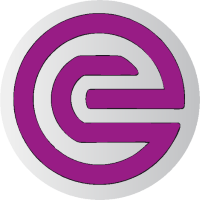
Evonik Industries AG
XETRA:EVK


| US |

|
Johnson & Johnson
NYSE:JNJ
|
Pharmaceuticals
|
| US |

|
Berkshire Hathaway Inc
NYSE:BRK.A
|
Financial Services
|
| US |

|
Bank of America Corp
NYSE:BAC
|
Banking
|
| US |

|
Mastercard Inc
NYSE:MA
|
Technology
|
| US |

|
UnitedHealth Group Inc
NYSE:UNH
|
Health Care
|
| US |

|
Exxon Mobil Corp
NYSE:XOM
|
Energy
|
| US |

|
Pfizer Inc
NYSE:PFE
|
Pharmaceuticals
|
| US |

|
Palantir Technologies Inc
NYSE:PLTR
|
Technology
|
| US |

|
Nike Inc
NYSE:NKE
|
Textiles, Apparel & Luxury Goods
|
| US |

|
Visa Inc
NYSE:V
|
Technology
|
| CN |

|
Alibaba Group Holding Ltd
NYSE:BABA
|
Retail
|
| US |

|
3M Co
NYSE:MMM
|
Industrial Conglomerates
|
| US |

|
JPMorgan Chase & Co
NYSE:JPM
|
Banking
|
| US |

|
Coca-Cola Co
NYSE:KO
|
Beverages
|
| US |

|
Walmart Inc
NYSE:WMT
|
Retail
|
| US |

|
Verizon Communications Inc
NYSE:VZ
|
Telecommunication
|
Utilize notes to systematically review your investment decisions. By reflecting on past outcomes, you can discern effective strategies and identify those that underperformed. This continuous feedback loop enables you to adapt and refine your approach, optimizing for future success.
Each note serves as a learning point, offering insights into your decision-making processes. Over time, you'll accumulate a personalized database of knowledge, enhancing your ability to make informed decisions quickly and effectively.
With a comprehensive record of your investment history at your fingertips, you can compare current opportunities against past experiences. This not only bolsters your confidence but also ensures that each decision is grounded in a well-documented rationale.
Do you really want to delete this note?
This action cannot be undone.

| 52 Week Range |
16.39
21.2
|
| Price Target |
|
We'll email you a reminder when the closing price reaches EUR.
Choose the stock you wish to monitor with a price alert.

|
Johnson & Johnson
NYSE:JNJ
|
US |

|
Berkshire Hathaway Inc
NYSE:BRK.A
|
US |

|
Bank of America Corp
NYSE:BAC
|
US |

|
Mastercard Inc
NYSE:MA
|
US |

|
UnitedHealth Group Inc
NYSE:UNH
|
US |

|
Exxon Mobil Corp
NYSE:XOM
|
US |

|
Pfizer Inc
NYSE:PFE
|
US |

|
Palantir Technologies Inc
NYSE:PLTR
|
US |

|
Nike Inc
NYSE:NKE
|
US |

|
Visa Inc
NYSE:V
|
US |

|
Alibaba Group Holding Ltd
NYSE:BABA
|
CN |

|
3M Co
NYSE:MMM
|
US |

|
JPMorgan Chase & Co
NYSE:JPM
|
US |

|
Coca-Cola Co
NYSE:KO
|
US |

|
Walmart Inc
NYSE:WMT
|
US |

|
Verizon Communications Inc
NYSE:VZ
|
US |
This alert will be permanently deleted.
 Evonik Industries AG
Evonik Industries AG
Evonik Industries AG
Investor Relations
Evonik Industries AG, a German powerhouse in the chemical industry, has carved out a prominent position by focusing on specialty chemicals that serve a plethora of industries worldwide. Unlike conventional chemical companies rooted in commodity chemicals, Evonik stands out through its innovative portfolio that includes high-performance polymers, additives, and unique formulations that enhance product efficiency across various sectors. Their operations aren’t confined to producing basic chemicals; instead, they emphasize specialized applications contributing to fields like healthcare, nutrition, resource efficiency, and smart materials. This focus enables Evonik to develop products that are integral to the functionalities of automotive parts, pharmaceuticals, animal feeds, and even consumer goods, thereby embedding themselves across the global value chain.
In generating revenue, Evonik adopts a business strategy that leverages its deep expertise in research and development, alongside strategic acquisitions and partnerships. Their R&D efforts are devoted to pioneering sustainable solutions – from energy-efficient building materials to biodegradable plastics – aligning with global sustainability trends. This innovative edge helps ensure that their products not only meet current market demands but also anticipate future needs. Revenue flows largely from the sale of these specialty products, which enjoy higher margins compared to traditional chemicals due to their unique applications and value-added benefits. Additionally, Evonik's strategic geographic expansion, particularly in emerging markets, and adaptation to local customer needs further drive growth, underpinning their continued success and ability to capture value in a rapidly evolving global market.

Evonik Industries AG, a German powerhouse in the chemical industry, has carved out a prominent position by focusing on specialty chemicals that serve a plethora of industries worldwide. Unlike conventional chemical companies rooted in commodity chemicals, Evonik stands out through its innovative portfolio that includes high-performance polymers, additives, and unique formulations that enhance product efficiency across various sectors. Their operations aren’t confined to producing basic chemicals; instead, they emphasize specialized applications contributing to fields like healthcare, nutrition, resource efficiency, and smart materials. This focus enables Evonik to develop products that are integral to the functionalities of automotive parts, pharmaceuticals, animal feeds, and even consumer goods, thereby embedding themselves across the global value chain.
In generating revenue, Evonik adopts a business strategy that leverages its deep expertise in research and development, alongside strategic acquisitions and partnerships. Their R&D efforts are devoted to pioneering sustainable solutions – from energy-efficient building materials to biodegradable plastics – aligning with global sustainability trends. This innovative edge helps ensure that their products not only meet current market demands but also anticipate future needs. Revenue flows largely from the sale of these specialty products, which enjoy higher margins compared to traditional chemicals due to their unique applications and value-added benefits. Additionally, Evonik's strategic geographic expansion, particularly in emerging markets, and adaptation to local customer needs further drive growth, underpinning their continued success and ability to capture value in a rapidly evolving global market.





























 You don't have any saved screeners yet
You don't have any saved screeners yet
